Abstract
1. A skin lesion was made in rats by dorsal incision and the insertion of a polythene tube. 2. Over a period of 25 days after wounding, assays were performed for ascorbic acid, DNA, hydroxyproline, methionine, tryptophan, tyrosine and free amino acids in the lesion tissue. 3. The neutral-salt-soluble proteins of the lesion tissue were fractionated on DEAE-Sephadex, with the separation of fibrinogen and γ-globulin from a serum protein fraction. 4. Over a period of 20 days after wounding, in wounded rats and in controls, assays were conducted for: ascorbic acid in lens and liver, hydroxyproline, soluble protein, methionine and water in muscle and tendon, and free amino acids in muscle. 5. Relative to controls there was a decrease in lens and liver ascorbic acid, a rise in tendon hydroxyproline, a rise in muscle free amino acids, a fall in muscle protein and a rise in tendon and muscle water.
Full text
PDF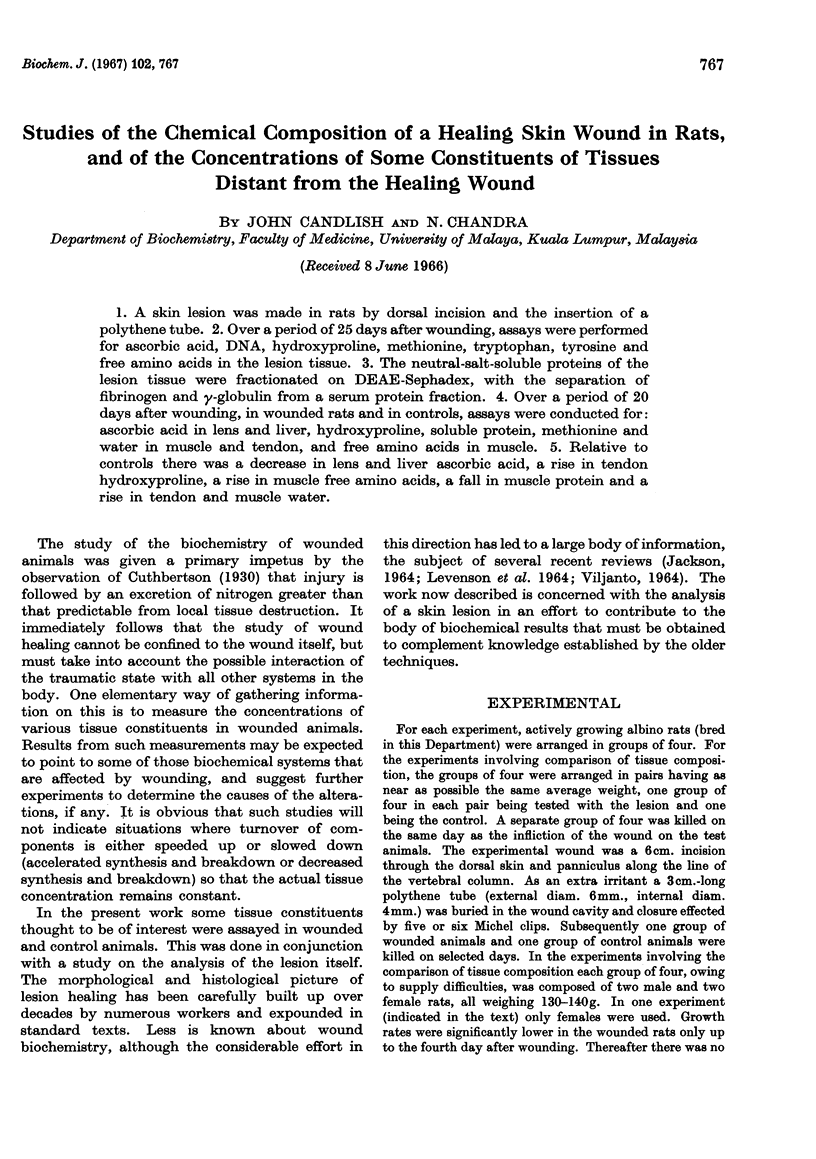
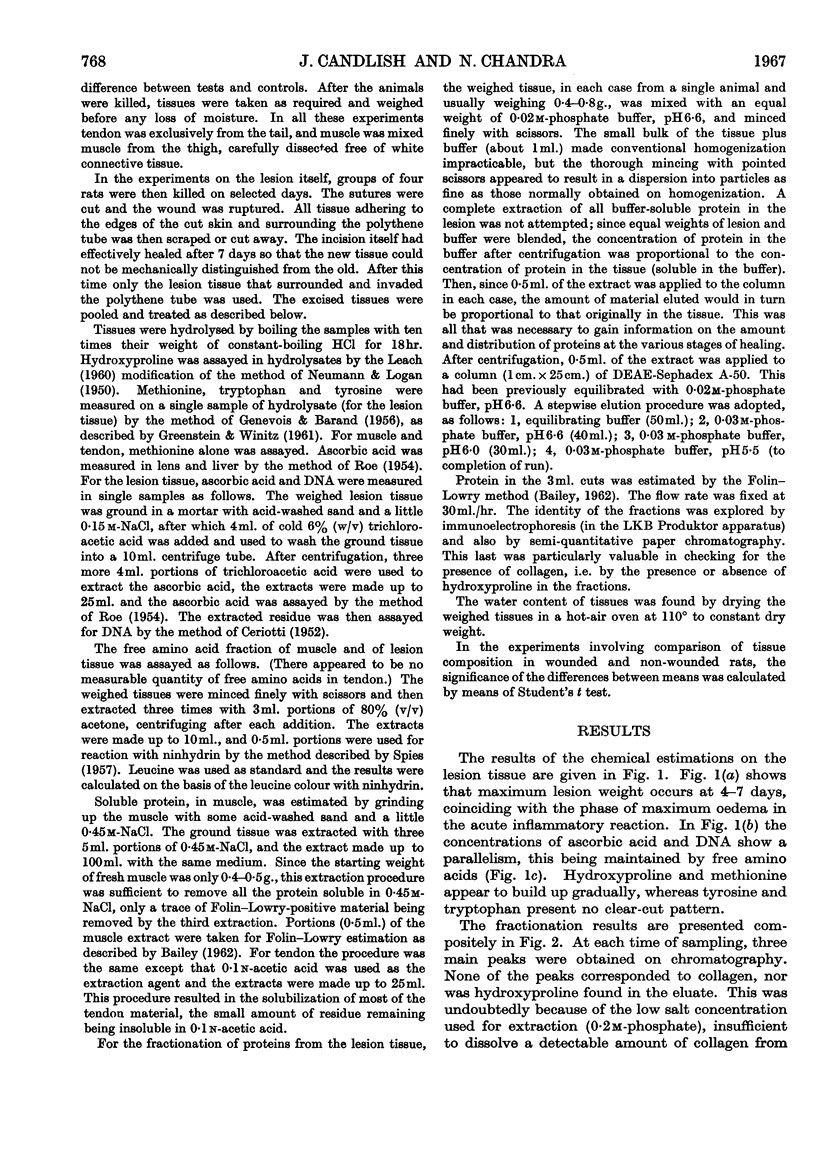
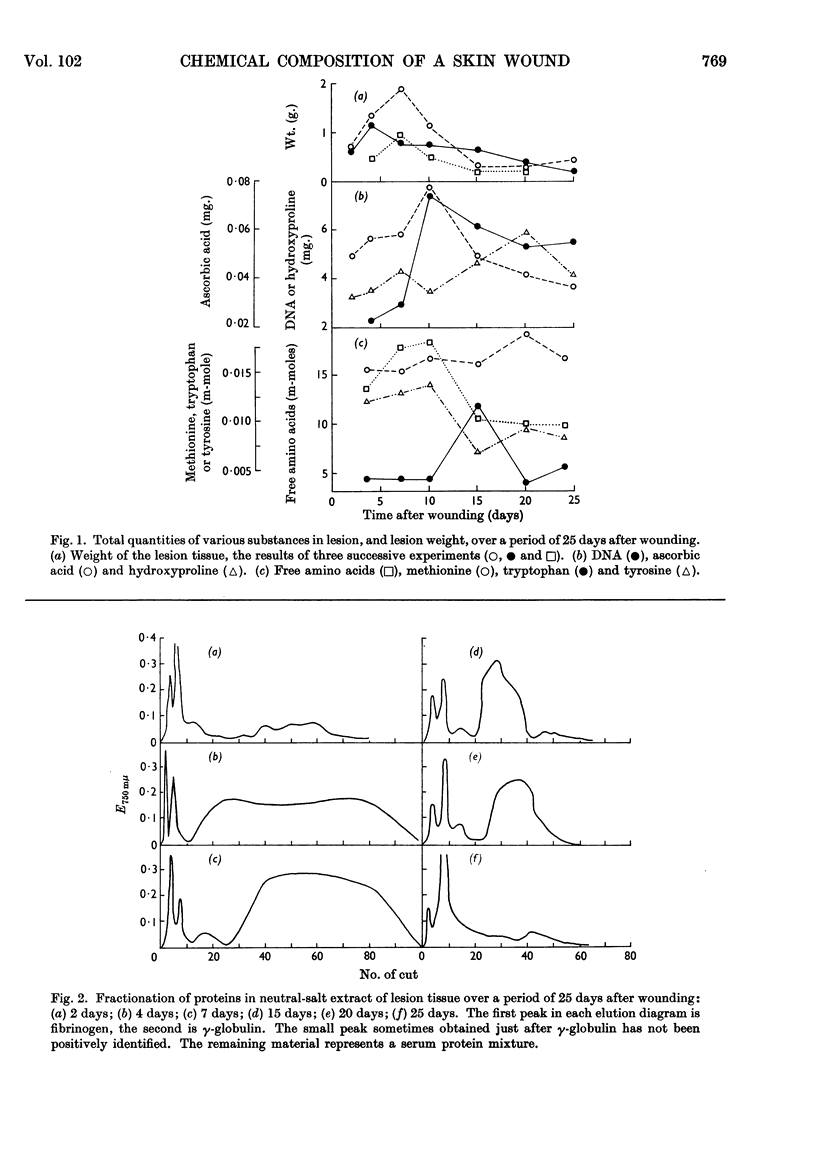
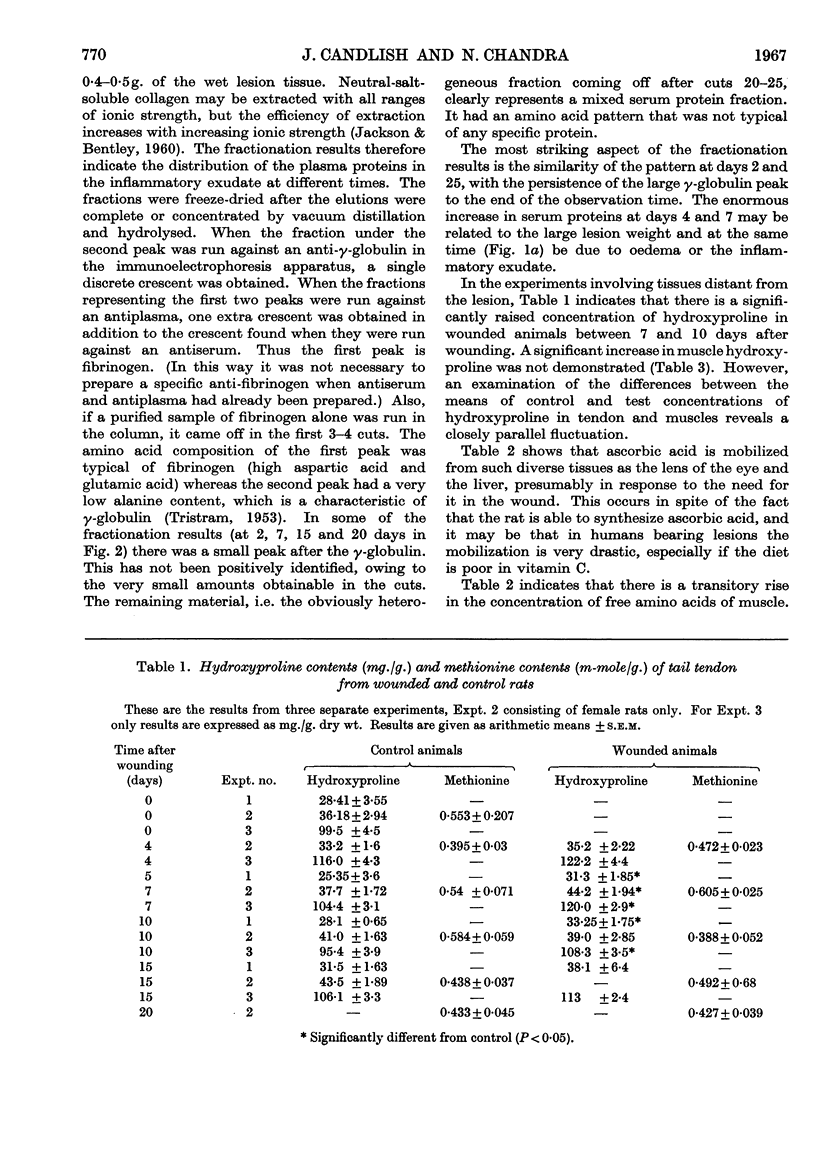
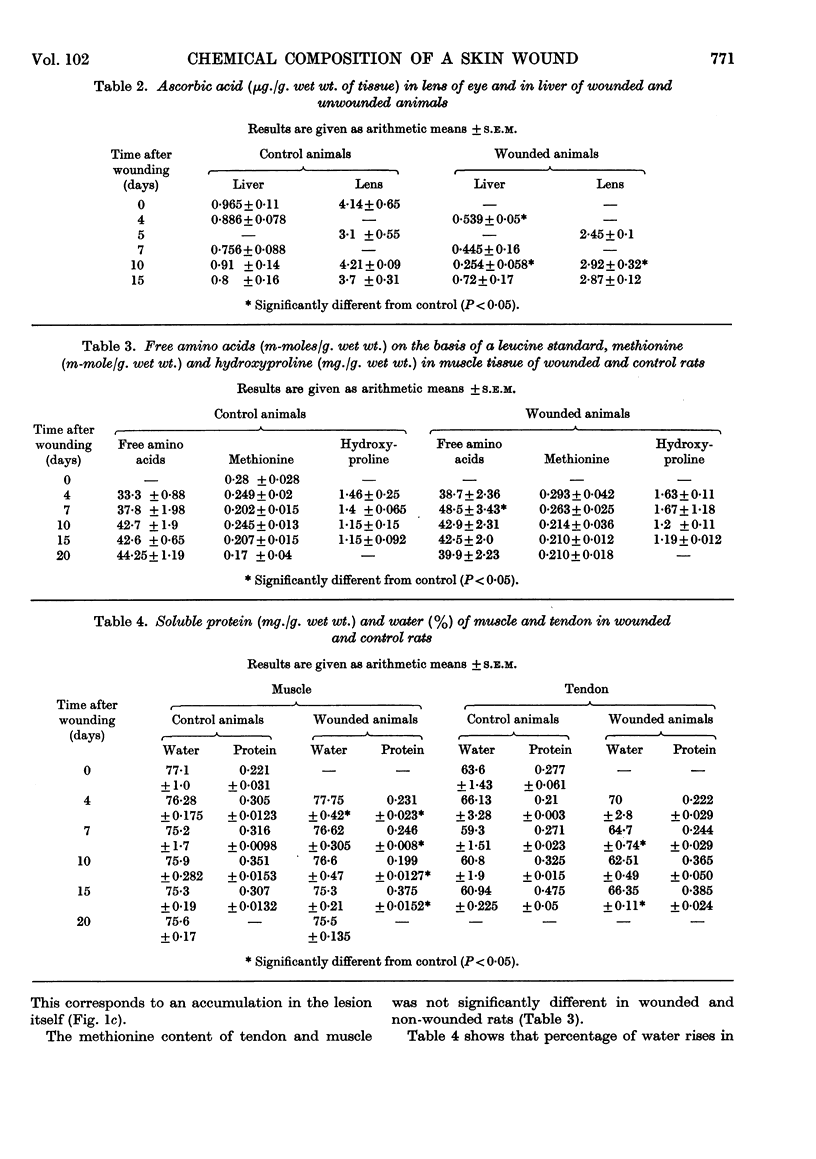

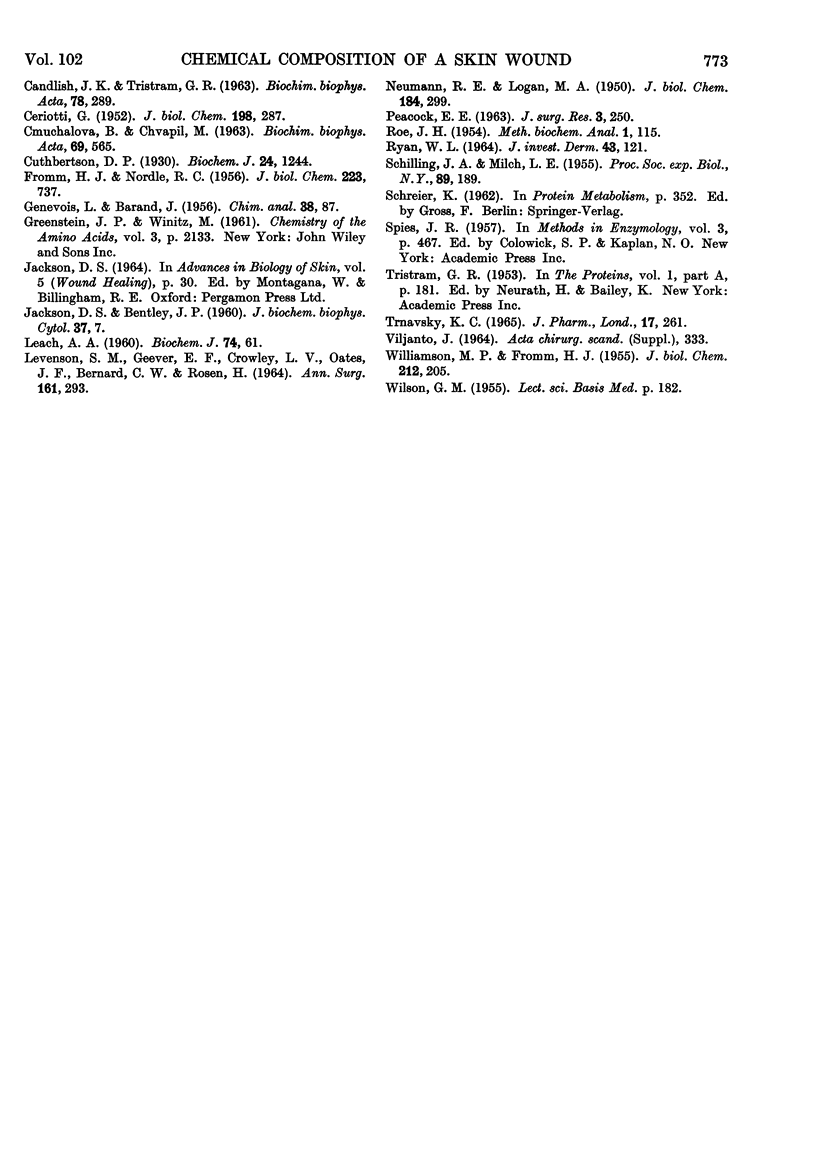
Selected References
These references are in PubMed. This may not be the complete list of references from this article.
- ADAMSONS R. J., MUSCO F., ENQUIST I. F. THE RELATIONSHIP OF COLLAGEN CONTENT TO WOUND STRENGTH IN NORMAL AND SCORBUTIC ANIMALS. Surg Gynecol Obstet. 1964 Aug;119:323–329. [PubMed] [Google Scholar]
- CANDLISH J. K., TRISTRAM G. R. THE RESISTANCE TO DISPERSION OF COLLAGEN FIBRES FORMED IN VITRO IN THE PRESENCE OF ASCORBIC ACID. Biochim Biophys Acta. 1963 Oct 29;78:289–294. doi: 10.1016/0006-3002(63)91639-1. [DOI] [PubMed] [Google Scholar]
- CMUCHALOVA B., CHVAPIL M. Changes in deoxyribonucleic acid, collagen and ascorbic acid during the development of carrageenan granuloma. Biochim Biophys Acta. 1963 Mar 5;69:565–567. doi: 10.1016/0006-3002(63)91310-6. [DOI] [PubMed] [Google Scholar]
- Cuthbertson D. P. The disturbance of metabolism produced by bony and non-bony injury, with notes on certain abnormal conditions of bone. Biochem J. 1930;24(4):1244–1263. doi: 10.1042/bj0241244. [DOI] [PMC free article] [PubMed] [Google Scholar]
- FROMM H. J., NORDLIE R. C. Experimental injury and sulfur amino acid metabolism. J Biol Chem. 1956 Dec;223(2):737–741. [PubMed] [Google Scholar]
- LEACH A. A. A study of the protein impurities in gelatins with ion-exchange resins. Biochem J. 1960 Jan;74:61–69. doi: 10.1042/bj0740061. [DOI] [PMC free article] [PubMed] [Google Scholar]
- LEVENSON S. M., GEEVER E. F., CROWLEY L. V., OATES J. F., 3rd, BERARD C. W., ROSEN H. THE HEALING OF RAT SKIN WOUNDS. Ann Surg. 1965 Feb;161:293–308. doi: 10.1097/00000658-196502000-00019. [DOI] [PMC free article] [PubMed] [Google Scholar]
- NEUMAN R. E., LOGAN M. A. The determination of hydroxyproline. J Biol Chem. 1950 May;184(1):299–306. [PubMed] [Google Scholar]
- ROE J. H. Chemical determination of ascorbic, dehydroascorbic, and diketogulonic acids. Methods Biochem Anal. 1954;1:115–139. doi: 10.1002/9780470110171.ch5. [DOI] [PubMed] [Google Scholar]
- RYAN W. L. REGULATION OF THE FREE AMINO ACIDS OF SKIN BY HYDROCORTISONE. J Invest Dermatol. 1964 Aug;43:121–123. doi: 10.1038/jid.1964.128. [DOI] [PubMed] [Google Scholar]
- SCHILLING J. A., MILCH L. E. Fractional analysis of experimental wound fluid. Proc Soc Exp Biol Med. 1955 Jun;89(2):189–192. doi: 10.3181/00379727-89-21753. [DOI] [PubMed] [Google Scholar]
- TRNAVSKY K. EFFECT OF FORMALDEHYDE-INDUCED PERIARTHRITIS UPON THE COMPOSITION OF COTTON-PELLET GRANULOMA IN RATS. J Pharm Pharmacol. 1965 Apr;17:261–262. doi: 10.1111/j.2042-7158.1965.tb07665.x. [DOI] [PubMed] [Google Scholar]


